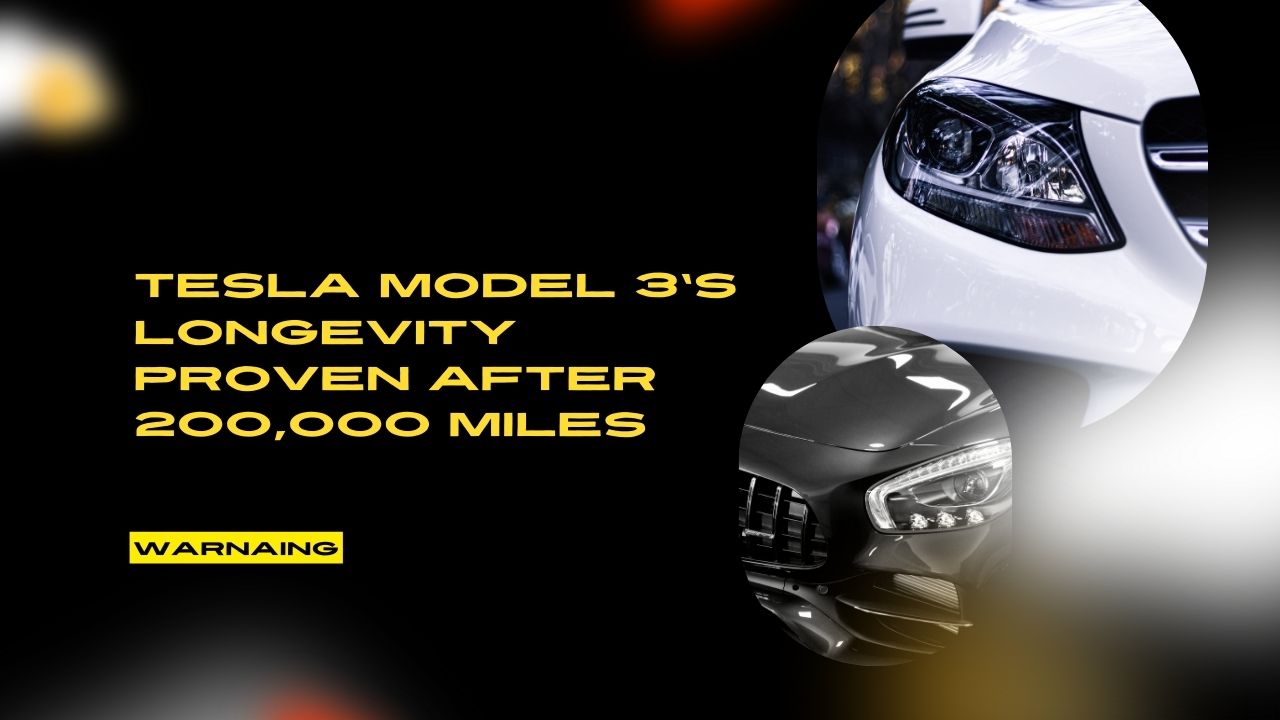Tesla is leading the charge in the electric vehicle (EV) revolution, which has been steadily gaining momentum. Due to its performance, range, and affordability, the Model 3 has emerged as a popular choice among Tesla’s lineup. The Tesla Model 3’s durability and longevity are among its most compelling features. Recent reports have demonstrated that even after 200,000 miles, there is little sign of wear and tear. This blog entry investigates the noteworthy perseverance of the Tesla Model 3, what adds to its life span, and how this affects current and expected proprietors.
1. The Meaning of 200,000 Miles
Arriving at 200,000 miles is a huge achievement for any vehicle, flagging long stretches of solid help and execution. For an electric vehicle like the Tesla Model 3, it’s a demonstration of the progressions in EV innovation and the powerful designing behind Tesla’s plan. At this point, traditional vehicles with internal combustion engines (ICEs) frequently experience significant wear and tear, such as engine degradation, transmission issues, and decreased performance. In any case, the Tesla Model 3’s exhibition remains surprisingly reliable even subsequent to timing 200,000 miles.
2. Battery Wellbeing and Debasement
The core of any electric vehicle is its battery. Battery degradation over time is a common concern among EV owners and potential buyers. The battery in the Tesla Model 3 retains a significant amount of its capacity even after extensive use, according to data. A remarkable achievement is the Model 3’s battery’s ability to retain up to 90% of its original capacity after 200,000 miles, according to reports.
This impressive battery health is made possible by a number of factors:
High level Battery The board Framework (BMS): By controlling temperature, power distribution, and charge cycles, Tesla’s sophisticated BMS optimizes battery performance.
Cellular Battery Quality: Tesla makes use of lithium-ion battery cells that are known for their energy density and durability.
Regular updates to software: Software updates that improve battery performance and longevity are frequently released by Tesla, ensuring that the vehicle operates effectively.
3. Negligible Support and Wear
Electric vehicles by and large require less support contrasted with their ICE partners. The Model 3 from Tesla is no exception. Because there are fewer moving parts, there is less room for error. A look at some aspects of maintenance:
System of Control: Regenerative braking is utilized in the Model 3, resulting in less wear on the brake rotors and pads. Even after 200,000 miles, many owners report that their brake components remain in excellent condition.
Transmission and Drivetrain: In comparison to ICE components, the electric motor and single-speed transmission are simpler and more long-lasting, resulting in less wear and fewer repairs.
Continual Upkeep: When compared to conventional automobiles, the Model 3 only requires minimal basic maintenance, such as tire rotation, cabin air filter replacement, and brake fluid checks.
4. Real-World Performance and User Testimonials
Numerous Tesla Model 3 owners have shared their experiences driving beyond the 200,000-mile mark, frequently focusing on the following aspects:
Predictable Reach: Many owners report that the range has not significantly decreased despite the high mileage, allowing them to continue driving their vehicles on long journeys without major concerns.
Inside and Outside Strength: The form nature of the Model 3’s inside and outside materials has shown to be versatile, with seats, dashboard, and paint keeping up with their condition over the long run.
Driving pleasure: The Model 3 is frequently praised by its owners for its pleasurable driving experience, noting that the vehicle maintains its strong acceleration and nimble handling even after a lot of use.
5. Suggestions for Current and Future Proprietors
The demonstrated life span of the Tesla Model 3 has a few positive ramifications for both current proprietors and likely purchasers:
Value at Resale: The strength and insignificant corruption add to a higher resale esteem, making the Model 3 a brilliant venture.
Cost reduction: Owners benefit greatly from lower operating and maintenance costs over the vehicle’s lifetime.
Natural Effect: Because the Model 3 has a longer lifespan, fewer vehicles need to be made and disposed of, lowering the overall impact on the environment.
The Tesla Model 3’s capacity to keep up with execution and dependability after 200,000 miles is a demonstration of the quality and sturdiness of Tesla’s designing. With negligible battery debasement, diminished upkeep needs, and predictable certifiable execution, the Model 3 stands apart as a forerunner in the electric vehicle market. For those considering an electric vehicle, the Tesla Model 3’s demonstrated life span gives unquestionable proof of its worth and supportability.
The Model 3 sets a high standard for durability and efficiency in the EV market, reassuring current owners and encouraging new buyers to switch to electric vehicles. The Tesla Model 3 is setting the standard for electric transportation.
